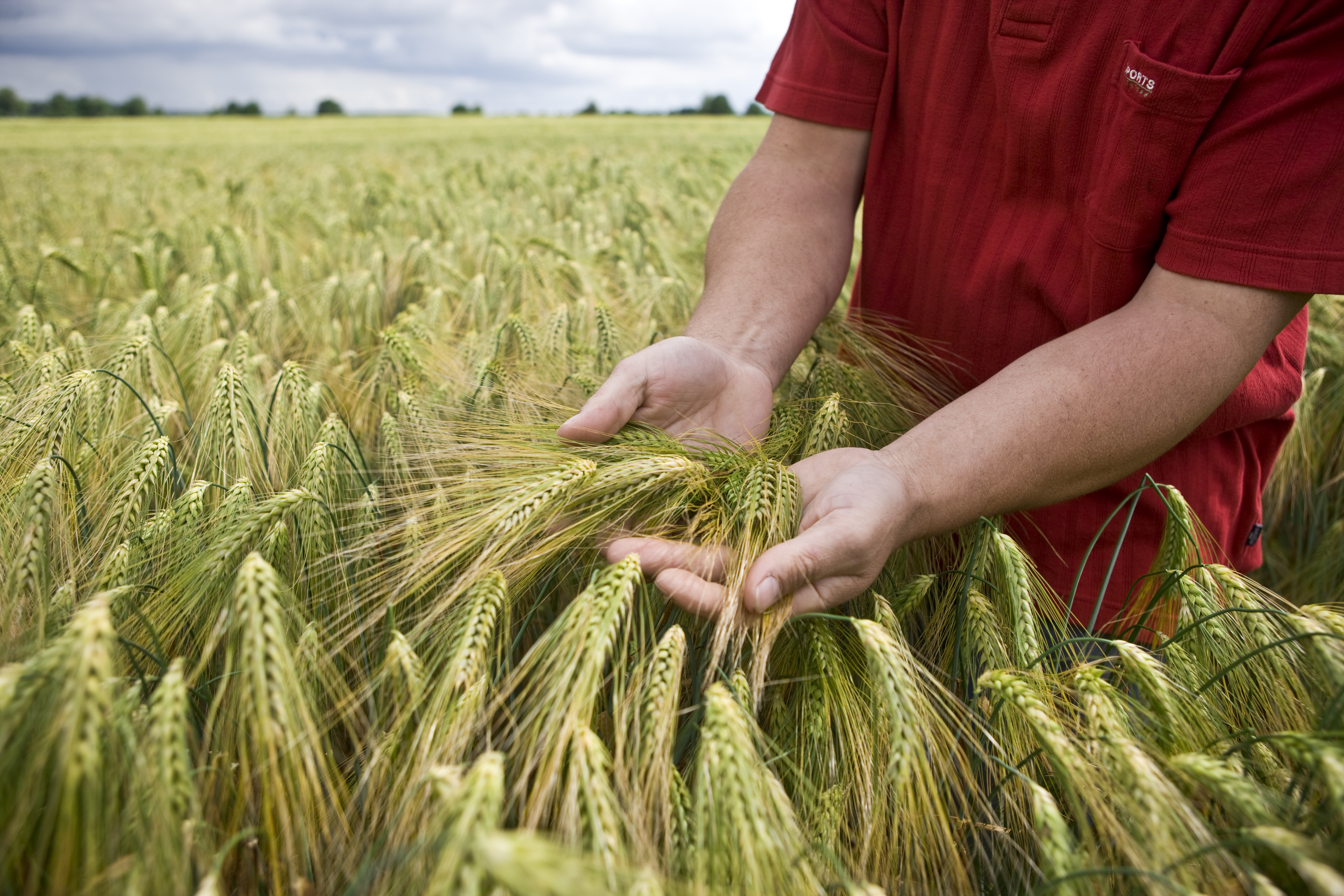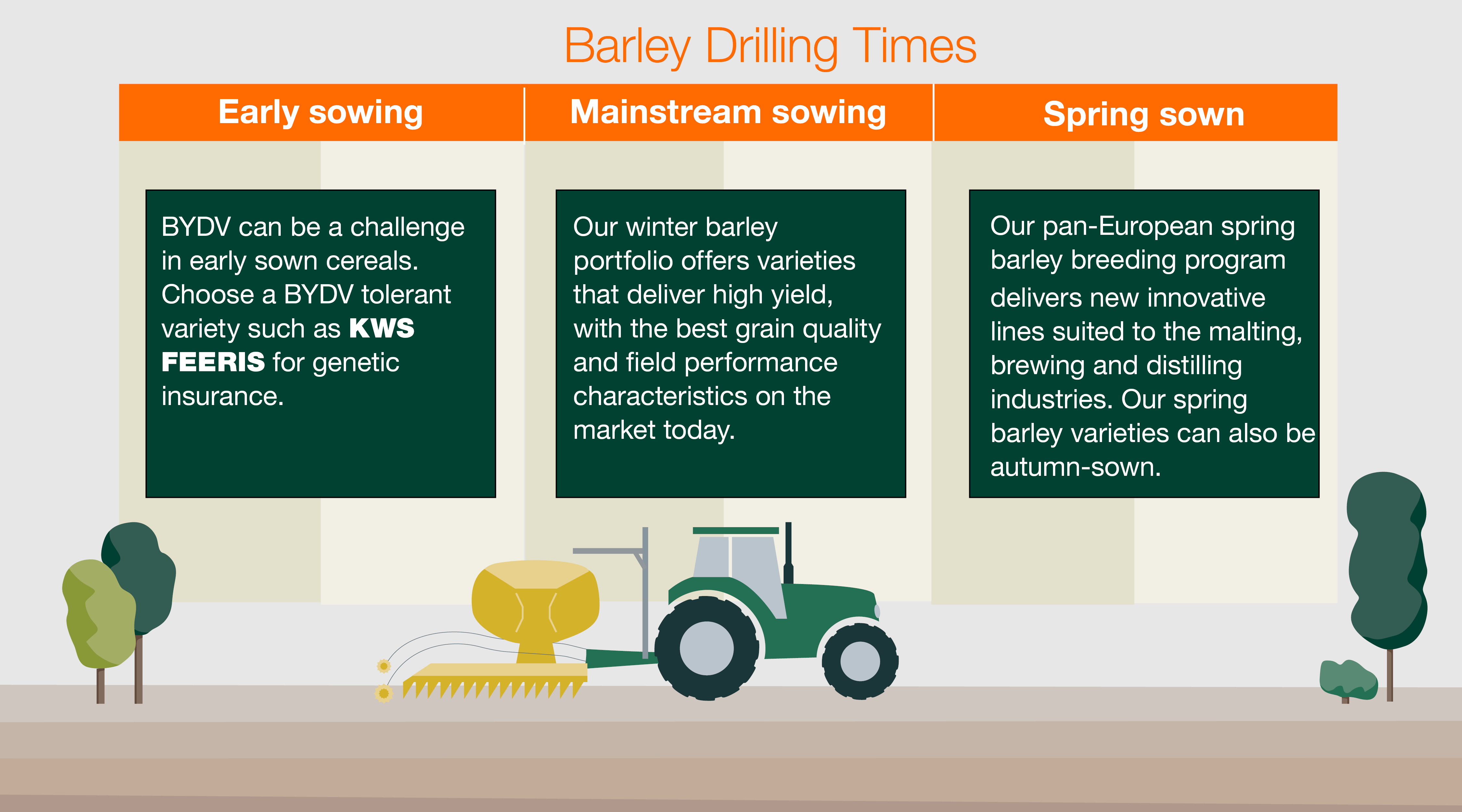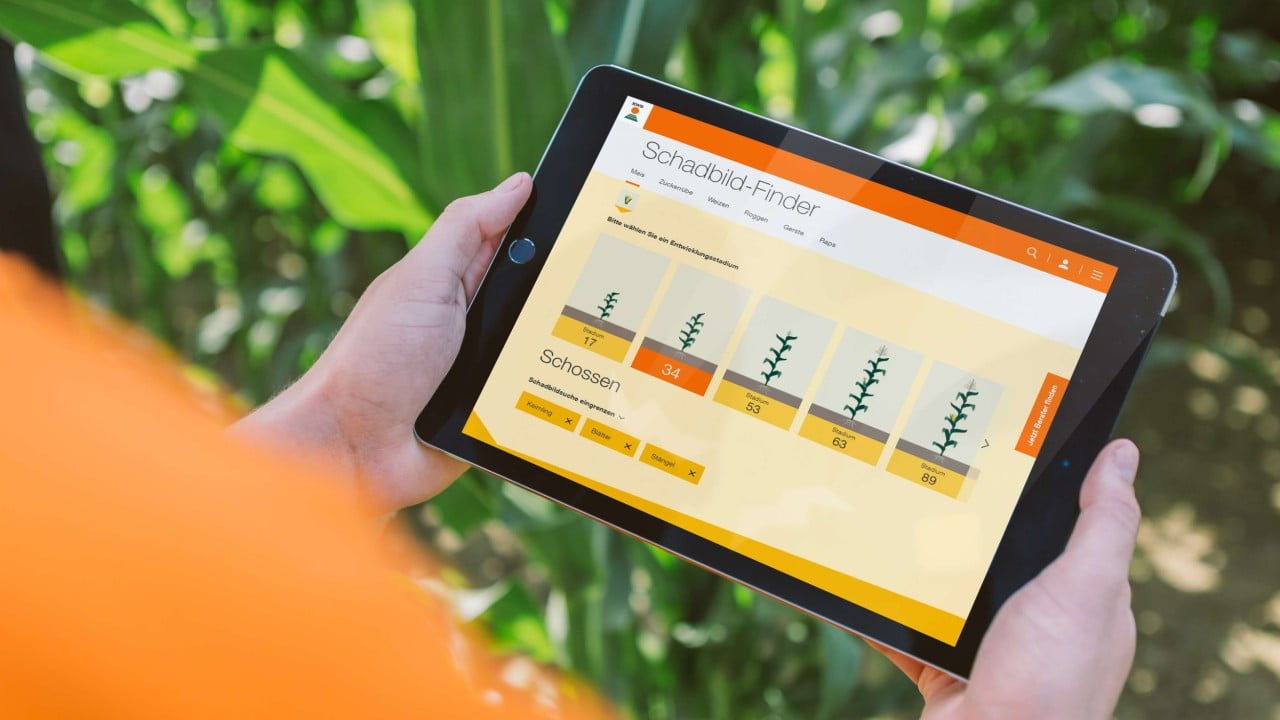Sowing Barley - information about seed rates, seed dates and soil preparation
What is the right seed rate for barley?
Many influencing factors can affect the seed rate in which you choose to drill, these can be:
- sowing time
- seedbed condition
- thousand grain weight (TGW) and
- planting capacity of the variety
- grass weed threat
Differences are made between two-row and six-row varieties. For six-row varieties, the yield is determined mainly by the grain number per ear and the TGW, and for two-row varieties the seed density is crucial, leading to higher sowing levels.
The following rules of thumb for seed rates in germinated grains/m² have proven themselves:
Guideline seed rates for barley
What are the habitat demands of barley?
The habitat demands of winter barley are low with sufficient nutrient supply. Locations with sharply changing temperatures that tend to freeze are not suitable for cultivation due to the increased risk during winter.
Snowy locations are therefore unsuitable for winter barley cultivation. Due to their strong development in the fall and early ripening, winter barley tolerates spring and pre-summer drought well and shows relatively good yield reliability. On areas contaminated with barley yellow mosaic virus, only resistant varieties should be used.
How to prepare the soil for sowing barley?
Winter barley requires well-deposed soil for sowing. The root system of barley is weaker than wheat or rye. A good soil structure in the upper soil is therefore particularly important. The seedbed must be sufficiently fine and dense, as a lack of soil closure of the seed seeds leads to an uneven emergence of the barley.
A crumb-deep loosening of the soil in favorable soil conditions is ideal for barley. Locations with prone to compaction in wet conditions therefore less suitable for the cultivation of winter barley.
In some regions, winter barley is often grown after winter wheat. In particular, soil preparation has the task of initiating fast tillage after the wheat harvest and destroying as much remaining wheat as possible. To do this, the straw of the wheat must be removed from the field immediately after harvest or briefly hammered and well distributed. Then flat stubble cultivation should take place.
The safest method for sowing is the crumbling depth ploughing application. If the time for stubble processing is too short, or if the weather conditions are very unfavourable for germination (e.g. too dry), stubble cultivation must be avoided.
If the winter barley is grown in rotation with rapeseed, legumes or even early potatoes, a crumb-deep loosening (20 to 25 cm depth) can be avoided if no crumb compaction is present.
What is the right sowing time for barley?
The sowing period of winter barley is significantly shorter than for wheat. Early sowing can already start in mid-September. The prime time for sowing is the period between the end of September and the beginning of October. Later dates are considered late sowing.
Especially two-row varieties are less winter-resistant and not suitable for late sowing. Extremely early sowing dates should also be avoided. They increase the risk that the the crop will be affected by mildew, net spots, and other leaf diseases. The risk of transmission of viruses is also significantly higher during very early sowing.
The sowing period of spring barley is similarly short and the start of sowing depends heavily on the weather in the spring. The main period is March, and sowing can take until April.
In principle, farmers should include their experience at the location in finding the right sowing time. External conditions also influence the exact sowing date.
What is the best drilling depth for barley?
The seed should be planted as deep as possible into the moisture. The optimal drilling depth is 2 to 4 cm. For successful establishment, the root must grow far into the wet soil. Pressure rolls can improve contact between seed and wet soil and reduce soil dehydration above the seed.








